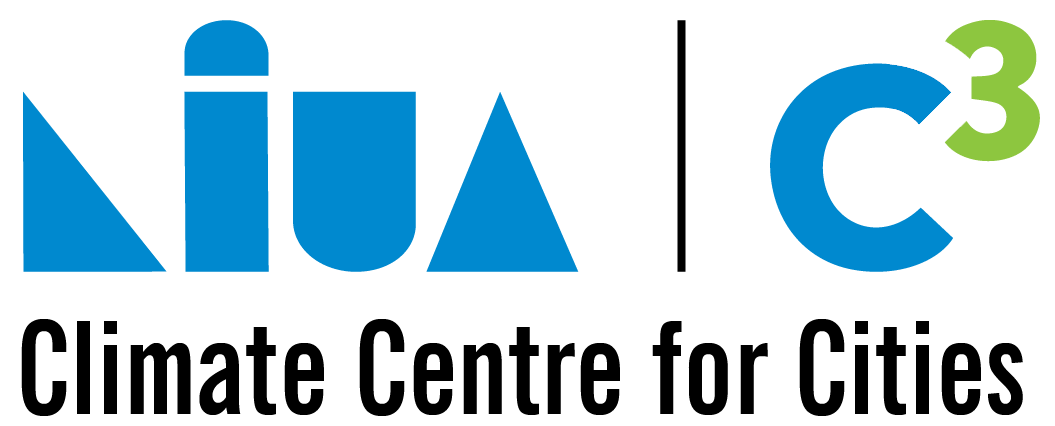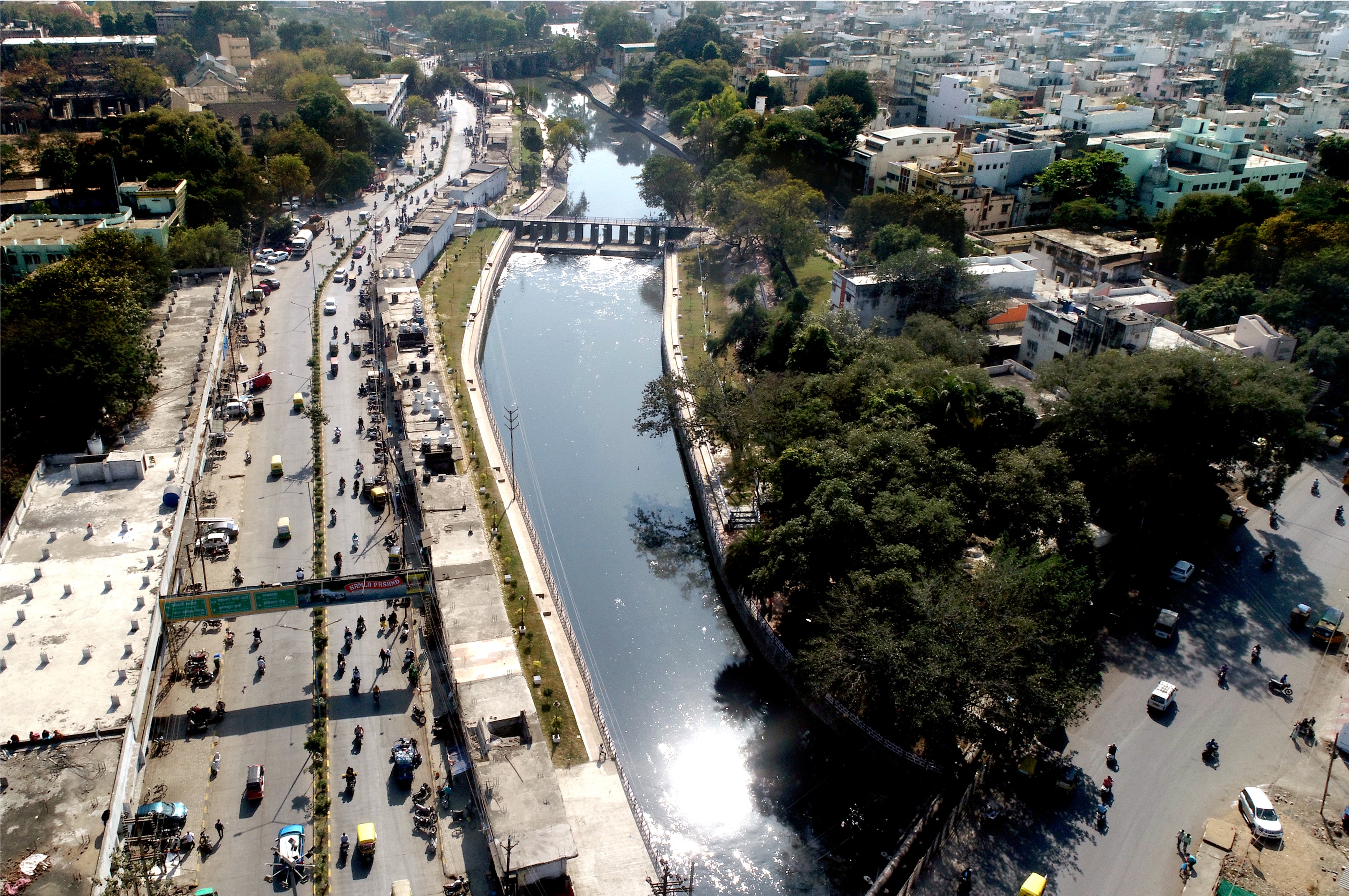Leveraging Urban Planning and Governance for City-level Climate Action
Published On:
Friday, November 27, 2020
As I write this blog, cities on the east coast of India, in Tamilnadu and Puducherry, brace for landfall of Cyclone Nivar, which is the second very severe cyclone faced by communities and cities on the eastern coast this year. In May, Cyclone Amphan had created havoc in Kolkata and other coastal areas of West Bengal, causing loss and damage to trees, forest areas & mangroves; transport, communication & power infrastructure; flooding & water logging bringing cities to a standstill for days. This year we have also seen a heat wave in Delhi & other cities in north & central India, extreme rains causing flooding & landslides in cities across the country, and cold wave conditions are expected in the north-western and Himalayan region in the coming weeks. This is just to give an indication of the extent of climate crisis that we are facing and the level of action that needs to be undertaken to address & mitigate risks emerging from climate change impacts in cities.
Add public health emergencies such as the COVID19 pandemic to this, and we have a scenario where cities are extremely resource constrained, fighting multiple challenges at a time. While effective disaster management mechanisms can help facilitate post-event response, relief & recovery, it is extremely urgent to adopt a climate-sensitive approach to urban planning & development. Existing literature suggests that local climate action plans based on city-level GHG assessments, leveraging nature-based solutions and risk-informed urban planning not only help minimize loss & damage from extreme events but also play a critical role in sustainable, low carbon and climate resilient growth (UN Habitat, 2015).
With this context, the ClimateSmart Cities Assessment Framework (CSCAF) of the Ministry of Housing and Urban Affairs (MoHUA), Government of India focuses on ‘Urban Planning, Green Cover and Biodiversity’ as one of its key thematic areas. CSCAF, launched in 2019 under MoHUA’s Smart Cities Mission, intends to help cities to assess their performance on 28 indicators across 5 thematic areas and enable them to develop a roadmap to steer their development trajectory. Currently, 126 cities including all Smart Cities and State Capitals are implementing phase 2 of this annual assessment exercise. Once the cities complete each evaluation cycle, they will have a clear understanding of where they stand with respect to climate actions. At the same time, they will also need to build on these actions to reflect improvement in the subsequent cycles and move ahead on the resilience pathway. This would involve a multi-pronged approach when it comes to the theme of ‘Urban Planning, Green Cover and Biodiversity’.
Firstly, conserving, rejuvenating and increasing blue and green cover in a city can play a critical role in terms of climate mitigation and adaptation aspects by decreasing local temperature, carbon sequestration, protection in case of floods and helping recharge groundwater. Nature based solutions have been known to provide a wide range of environmental, social and economic benefits and are indispensable for both climate change mitigation and adaptation (IIED, 2016). The first step would be creating a database of the blue and green areas in the city. Spatial, temporal and qualitative data will not only help regularly monitor their status but also devise strategies and funds to conserve and improve the same. At the same time, identifying the natural assets as conservation/ low intervention areas in the land use and master plans can go a long way in this direction.
Secondly, conserving and sustainably managing biodiversity is critical to building climate resilience (IUCN, 2017). Urban Biodiversity provides significant ecosystem services contributing to climate change mitigation and adaptation, such as carbon sequestration, air and water purification, mitigation of impacts of environmental pollution, noise reduction, and regulation of microclimate. In the context of Indian cities, urban local bodies are required to constitute ‘Biodiversity Management Committee’ and prepare ‘People’s Biodiversity Register’ in consultation with local community, as per the Biological Diversity Act 2002 and National Green Tribunal Ruling of 2020. The CSCAF also recommends preparing a City Biodiversity Plan and Index towards allocating resources, identifying conservation & management strategies and regular monitoring of various species and taxa. A number of cities including Hyderabad, Gangtok and Kochi have developed their City Biodiversity Indices and are taking action in this direction.
Another critical step for cities towards resilience building is developing city-level strategies, institutional and governance mechanisms for disaster risk reduction. While it is understood that the existing framework in India provides for formulation of a disaster management plan and committee at the district level, recent experience has shown that urban centres are at the frontline of managing and facing the brunt of disasters. This calls for focused local action to mitigate the impacts of extreme events on communities and infrastructures. This would include but not be limited to – maintaining data on loss & damage, hotspots, etc.; formulating risk-informed action plans and departmental standard operational procedures (SOP); setting up early warning systems and building community resilience through IEC measures. National Disaster Management Authority (NDMA) guidelines of 2010, 2014, 2019 and MOHUA’s SOP on urban flooding, 2017 provide guidance to cities on the subject.
Last but not the least, a comprehensive City Climate Action Plan addressing mitigation as well as adaptation aspects, ranging from land use planning, transportation, energy use and waste management to water management, air pollution & urban health, and urban environment can be the key to cohesive local action. National and international guidelines recommend setting up of GHG reduction targets based on a local emissions inventory, and identification of risk-prone hotspots, assets & communities based on an area/ ward level assessment to come up with the city level climate action plan. Closely coordinated multi-stakeholder action; applying a climate lens to urban development plans, infrastructure investments & projects; and mainstreaming climate resilience in development codes, regulations & bylaws is equally important to address multiple risk scenarios.
The pandemic has strongly reiterated the importance of local preparedness towards addressing global crises such as climate change – in terms of resources and infrastructure, robust data & monitoring systems, multi-level & forward-thinking strategic actions to mitigate and manage risks. Leveraging existing urban development processes and governance mechanisms to mainstream climate actions can be the key to this process.
Disclaimer: Views expressed are personal
Contact Us
1st and 2nd Floor, National Institute of Urban Affairs
India Habitat Centre Lodhi Road New Delhi-110003
Please Call Help Desk at 011-411-86699
Monday - Friday, 9:00 AM - 5:00 PM
Please write to us at c-cube@niua.org







Post a Comment